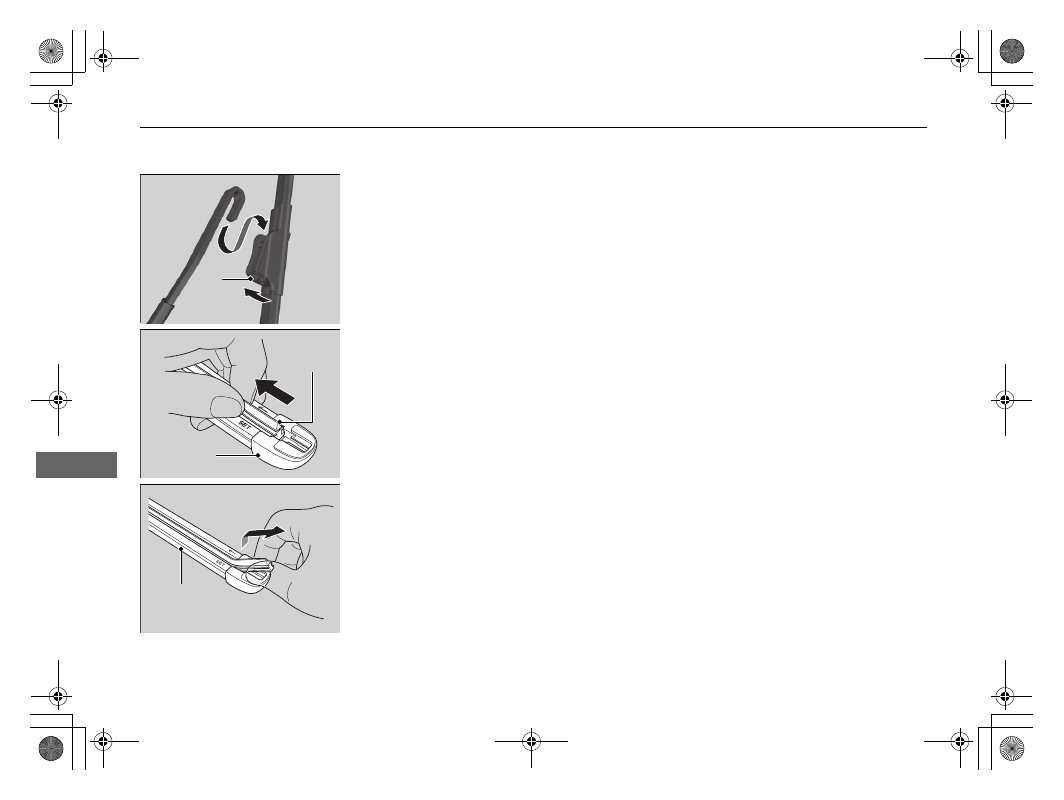Honda Odyssey (2019 year). Manual - part 43

672
uu
Checking and Maintaining Wiper Blades
u
Changing the Front Wiper Blade Rubber
Main
tenan
ce
4. Press and hold the tab, then slide the
holder off the wiper arm.
5. Pull the end of the wiper blade in the
direction of the arrow in the image until it
is out of the holder’s end cap.
6. Pull the wiper blade in the opposite
direction to slide it out of the holder.
Tab
Wiper
Blade
End Cap at
the bottom
Holder